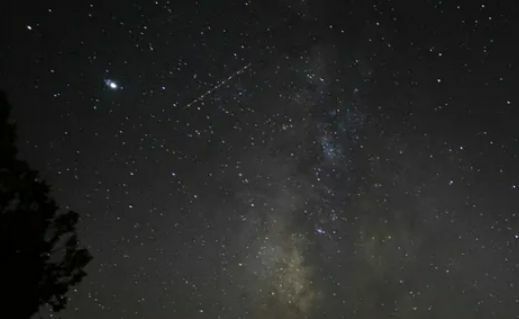Starry night showtime: Catch the Orionids meteor shower this weekend

The National Astronomical Research Institute of Thailand (NARIT) invited the public to witness the Orionids meteor shower, a spectacle of dust from Halley’s Comet, from Saturday night, October 21, to early Sunday morning, October 22.
The meteor shower, expected to reach its peak at around 10.30pm, is likely to display about 20 meteors per hour and can be observed across the country, weather permitting.
The Orionids meteor shower, also known as the Hunter’s Star Cluster, occurs annually between October 2 and November 7, with the highest rates of meteor falls on the nights of October 21 and 22.
This year, it is expected to peak with an average of 20 meteors per hour, centred near the Hunter’s Star Cluster in the east. The spectacle can be viewed with the naked eye, provided the sky is clear and rain-free across the country.
The Orionids meteor shower is a result of Earth moving through the orbit of Halley’s Comet (1P/Halley), which left a large amount of dust and small particles in its orbit when it approached the Sun in 1986.
The Earth’s gravity pulls these particles into friction with the Earth’s atmosphere, causing them to burn up and appear as a streak of light resembling a shooting star around the Hunter’s Star Cluster. The display features beautiful yellow and green hues streaking across the sky.
Halley’s Comet orbits the Sun and comes closest to Earth every 76 years. Its last closest approach to the Sun was in February 1986, and calculations predict that the next time the comet will be nearest to the Sun will be in the middle of 2061, or 38 years from now. The beautiful and bright comet will once again grace our sky for the world to appreciate.
Information from the NARIT page reveals that every time this comet approaches, solar radiation causes it to lose mass, shrinking by 1 to 3 metres with each orbit close to Earth.
Eventually, when the ice mass eventually evaporates completely, Halley’s Comet will no longer have a beautiful tail as we used to see in the past. It will become just a dark rock in space or could break down into dust particles that continue to orbit around the Sun.
Halley’s Comet was named in honour of Edmond Halley, an English physicist and mathematician who calculated and discovered it, reported Sanook.
Follow more of The Thaiger’s latest stories on our new Facebook page HERE.
Latest Thailand News
Follow The Thaiger on Google News:


























